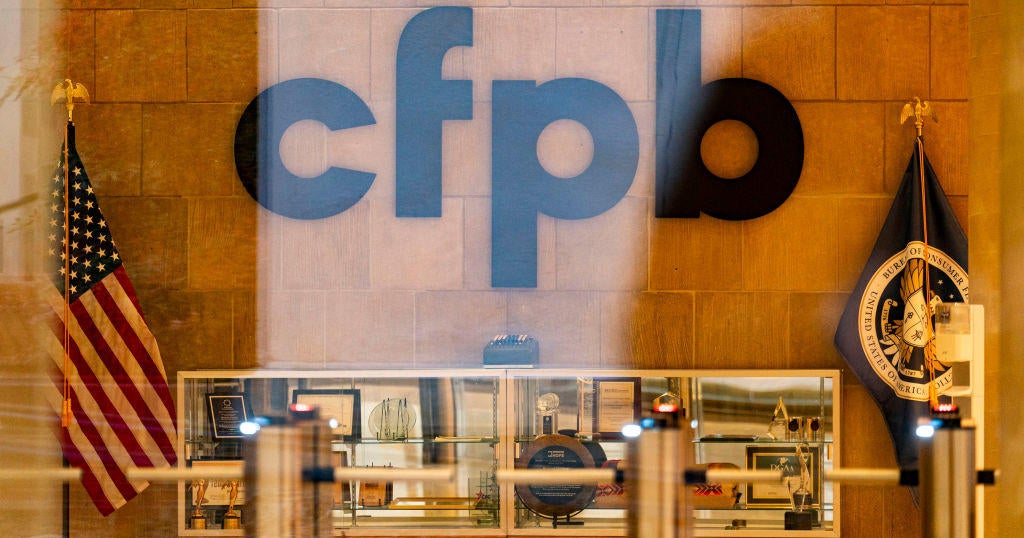Stephen Paddock used a "bump stock" to make his guns even deadlier
Machine guns, which fire multiple shots with one pull of the trigger, have been technically illegal since the mid-1980s. Yet while some of the guns that Stephen Paddock used to shoot more than 500 people in Las Vegas had been modified to fire as automatic weapons, they were perfectly legal, according to rules established by the Bureau of Alcohol, Tobacco, Firearms and Explosives (ATF).
The modifications he appears to have made to his semi-automatic AR-15s, which by one estimate allowed him to fire as many as nine rounds per second, can be bought in many different forms on the internet. And fully automatic machine guns are still being sold from ads in the back pages of gun magazines.
The complicated structure of our nation's gun laws defies anyone who's not an expert on the subject. And since each state, and sometimes individual cities, has different gun laws, it makes it even more complicated. Those who are knowledgeable often don't want to talk on the record. But here's some historical perspective from gun experts.
Even though the 1986 Firearms Protection Act bans the manufacture of automatic firearms for domestic commercial purchase, about 176,000 fully automatic weapons are currently in private hands. All of them are legal and can be resold for prices that can vary from $15,000 for a submachine gun firing pistol rounds to $50,000 for a military-style long-range weapon. But some of these guns may be simply parts or in parts, and currently unusable.
As of 1986, all gun makers producing AR-15s or similar guns can only legally make a fully automatic AR-15 for sale to the police or military. Unlike older weapons such as the Russian AK-47, which could be made fully automatic by filing or replacing the sear, a catch that holds the hammer or bolt back until the trigger is pulled again, modern guns are difficult to modify, although it can be done. If someone is found to have converted a gun into an automatic, the penalty is a $10,000 fine and possible 10-year jail sentence. The ATF reportedly uses "stings" to catch such perpetrators.
But here's the catch. The agency doesn't consider certain modifications, which allow the AR-15 and other weapons to fire multiple rounds automatically, to have turned them into machine guns in the legal sense. These are some:
"Bump stock" technology
Takes advantage of inertia by allowing the shooter to keep his or her finger on the trigger. The stock rebounds after the recoil from the bullet leaving the barrel. The rebound, caused by air pressure from a gap in the stock sends the gun forward into the shooter's stationary finger, which unleashes a volley of shots. The gun keeps firing as long as the trigger is depressed and there's ammunition in the magazine.
According to reports, Paddock had 12 weapons with this feature, most equipped with 60- to 100-round magazines.
Gun owners in Nevada, where he lived, can buy a bump stock without a permit, background check or waiting period to buy one. The component is widely available on the internet for $90 to $200.
Pull and release
Using one pull of the trigger to shoot a gun is legal, but with this feature you can fire with the pull and fire another round as the trigger is released. Many older double barreled over-and-under (one barrel on top of the other) shotguns are set up this way. A gunsmith or competent amateur can make this modification.
"Crank fire"
The shooter can "crank" out multiple rounds with a single pull of the trigger. This also requires a modification of the gun, in most cases by a professional.
An obvious caveat: The more rounds you fire from a gun, the hotter the barrel gets and the more likely that parts of it will melt. At about 600 rounds per minute, the gas tube on an AR-15, which enables it to fire as a semi-automatic, will melt -- that could explain why Paddock used multiple guns. Since an automatic weapon like the AR-15 can fire 400 rounds per minute, this happens pretty quickly.
Another drawback to an automatic firearm is its relative inaccuracy because the "kick" from firing a large pistol or high-powered rifle generally takes the gun barrel higher. But the AR-15, and its Russian counterpart the AK-73, fire smaller-caliber rounds with less recoil, so a skilled shooter can hold the gun steady even without a bipod.
Intermediate cartridges of .223 caliber are little larger than .22 bullets of the kind often used for shooting tin cans. Some states even outlaw them for deer hunting because they are more likely to wound than kill a large animal outright. But they carry incredible amounts of energy and cause severe damage as they spiral through the body.
The obvious question, in wake of the massacre in Las Vegas, is whether the parts used to enable automatic fire should be made illegal? Some gun advocates admit the only purpose of such technology is recreational, mainly so people at gun ranges can simulate the experience of firing a real automatic weapon.
By contrast, you don't need automatic fire to kill an animal or hit a target. As a defensive weapon for home protection at close range, an AR-15 is already fearsome even in semi-automatic mode, and has been a staple of the military arsenal since the Vietnam War.
According to gun advocates, however, banning this technology will only lead to changes in technology. Just as the bump stock seemingly slipped through the legal cracks, so will other innovations, such as the ones mentioned above.
Gun dealers have said that sales soared during the Obama presidency and peaked when Hillary Clinton looked likely to win the 2016 presidential election. They dropped after Trump – a pro-gun president – was elected. "The easiest way to make people want something is to ban it," said a gun owner.




